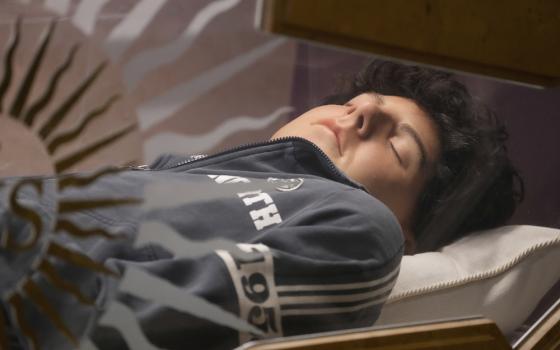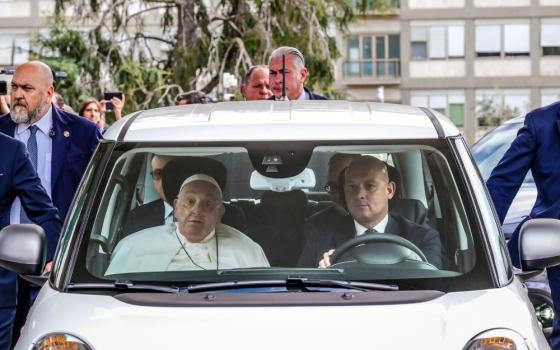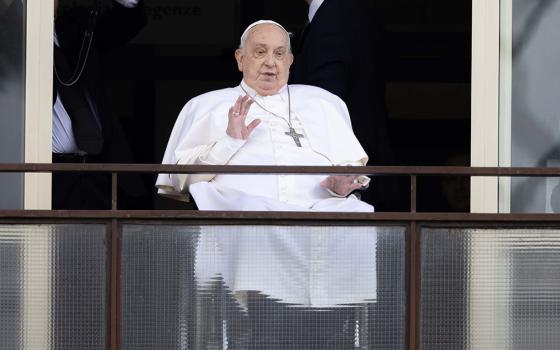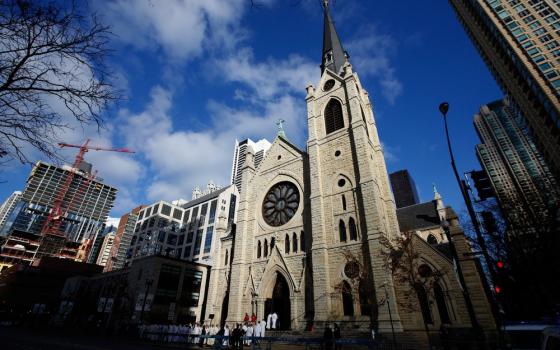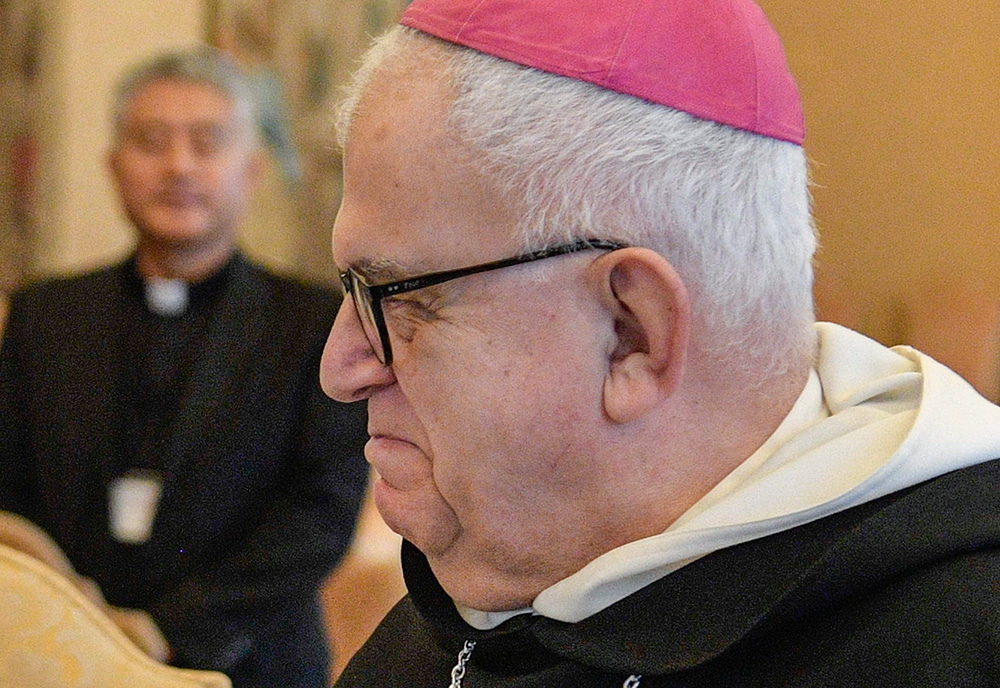
Archbishop J. Augustine Di Noia is seen in the Apostolic Palace of the Vatican Nov. 24, 2022. (CNS/Vatican Media)
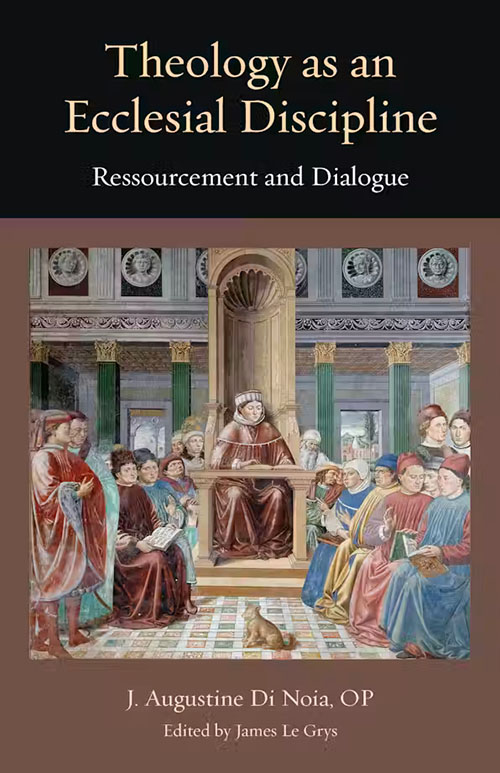
As you read J. Augustine Di Noia's newly released book, Theology as an Ecclesial Discipline: Ressourcement and Dialogue, the word that appears again and again is "received." This collection of essays by the Dominican archbishop reminds Catholic Christians that theology starts with something we have been given, namely, revelation, and that the nature of the gift is such that it could only come to us as a gift. We could not, on our own, have discovered the truths with which theology wrestles.
All intellectual disciplines have a particular and proper scope, a set of accepted rules that guide research, traditions of learning that include hermeneutical keys that allow one to distinguish significant questions from idle ones, and so on. Di Noia, who worked for many years in the Vatican's doctrinal and liturgical dicasteries, is keen to establish the distinctive quality of Catholic theology.
"Examined independently of the assent of faith and the mediation of the ecclesial community, the texts, institutions, rites and beliefs of the Catholic Church can focus on the humanistic, philosophical and social scientific inquiries that together constitute the field of religious studies," he writes. "But Catholic theology is a different kind of inquiry. Its precise scope is to seek the intelligibility of a truth received in faith by the theologian who is himself a member of the ecclesial community that is 'the place of truth.' " The felicitous phrase "the place of truth" comes from Cardinal Walter Kasper.
The truth is revealed to us, and that revelation, received as such, places us into the divine economy of grace.
"Revelation is itself a grace," Di Noia writes. "Hence, there is a real sense in which no follower of Christ can assume the role of teacher: with respect to the divine truth, there is only one Teacher, and everyone else is a learner. This structure of human receptivity in the face of the superabundant grace of God is fundamental to every aspect of Christian communal and individual existence."
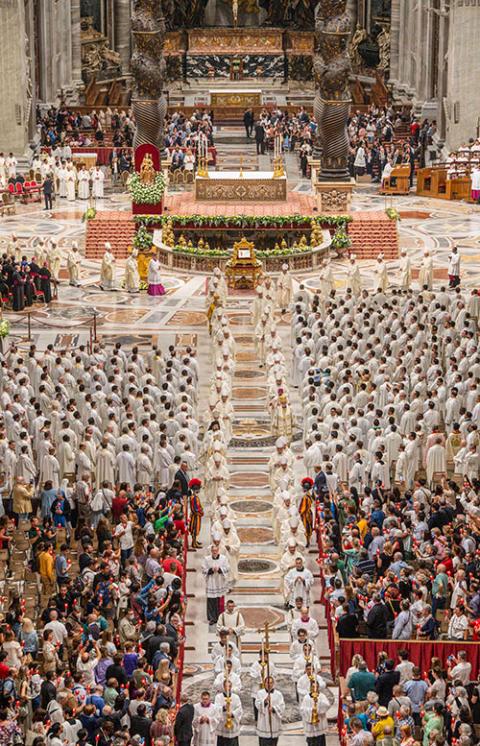
Cardinals and bishops process out of St. Peter's Basilica after Pope Francis celebrated Mass Oct. 11, 2022, to mark the 60th anniversary of the opening of the Second Vatican Council. (CNS/Vatican Media)
Because the church is also a historical community, theology is always done in a kind of continuum with the work of prior generations of Christians. "We recognize that our questions have been asked before by others, some of whom have had very interesting things to say about them."
Throughout these essays, Di Noia consults that history widely and incisively. His ability to survey, engage and critique current theological and philosophic literature is also on full display throughout the volume.
Di Noia invokes more homely analogies as well. In the chapter on the authority of Scripture in sacramental theology, he compares the relationship between doctrine and theology with that between mathematics and music.
"For example, we could say that music is subalternated to mathematics, since music depends on timing, intervals (of pitch), and other qualities which are measured by mathematics," he writes. "This does not mean that doing calculus is more noble than playing the French horn, but only that musicians need arithmetic if they are to make headway in some of their own proper business, e.g., composing harmonies."
The chapter that will most engage NCR readers is cheekily titled "Taking the Cure at Yale." It was there, as a graduate student, that Di Noia came to understand and make sense of the two basic lenses through which Catholics in the United States were receiving the 1962-65 Second Vatican Council.
According to one reading, the Council was understood to commend a strong reaffirmation of Catholic Christian identity, taking the broadest possible view of its historic traditions, yet open to the cultural and religious pluralism characteristic of our times. But, in the eyes of a numerous and influential group of American theologians, such a reading reversed the true priorities of the Council. It was not restoration, but modernization, dialogue, and social commitment that Vatican II chiefly sought to cultivate in the contemporary Church.
Di Noia insists that the conciliar documents themselves demonstrate that "both programs — ressourcement and aggiornamento, as they came to be called — were addressed at the Council" but that the documents did not give hermeneutic priority to one or the other program.
He traces the history of ressourcement. In the 19th century, throughout which the church was most often in a defensive posture, the recovery of scholastic sources "supplied the means to refute the errors of modernity if not always to engage its challenge. But study of the biblical, liturgical, and patristic sources afforded theologians access to the immeasurably more pluralistic pre-scholastic period."
This latter and wider ressourcement was shunned through the mid-20th century by officials in Rome, where Neo-Scholasticism prevailed, but it took root in many German and French schools of theology. "For neoscholastic theologians," Di Noia writes, "rressourcement had provided access to an arsenal; for biblically and patristically oriented theologians, it seemed to unlock a treasure."
Advertisement
Neither the aggiornamento nor the ressourcement proved unproblematic in the post-conciliar period.
"Conceived simply as the updating of theology, aggiornamento is never finished catching up; conceived more grandly as modernization, it is already far behind," Di Noia observes. "On the other hand, ressourcement theology has sometimes shown itself unwilling or unable to confront and resolve the conceptual problems — the quaestiones, as Aquinas might say — that the sources themselves serve up. Lectio is not always enough."
Di Noia's capacity for criticism of all sides, however, does not prevent him from indicating where he stands. "The priority of aggiornamento fostered a climate in which modern criteria of rationality were perceived to be in competition with fidelity with the Christian doctrinal tradition." Some modernizing theologians adopted "correlationalist conceptions of the relation of faith and modern culture" in which "culture asks the questions to which faith provides the responses." For others, "faith tailors its claims with an eye to prevailing canons of reasonability and applicability."
He compares this modernizing theology to the Protestant liberal theology of the late 19th century — which he studied at Yale University — and reaches the same conclusion that neo-orthodox Protestant theologians in the 20th century did: "The agenda of modernization by itself turned out to be an inadequate program for the practice of Christian theology."
It is clear, however, that for Di Noia, returning to the sources cannot mean returning to the 1950s. The council did open the windows of the Vatican.
"There was no question of reversing the tremendous gains in flexibility, in collegiality, in religious freedom, in social and political awareness, in commitments to dialogue with other Christians, other religious people, and nonbelievers, in respect for diversity within the world Church, and so on — all achieved in the name of aggiornamento."
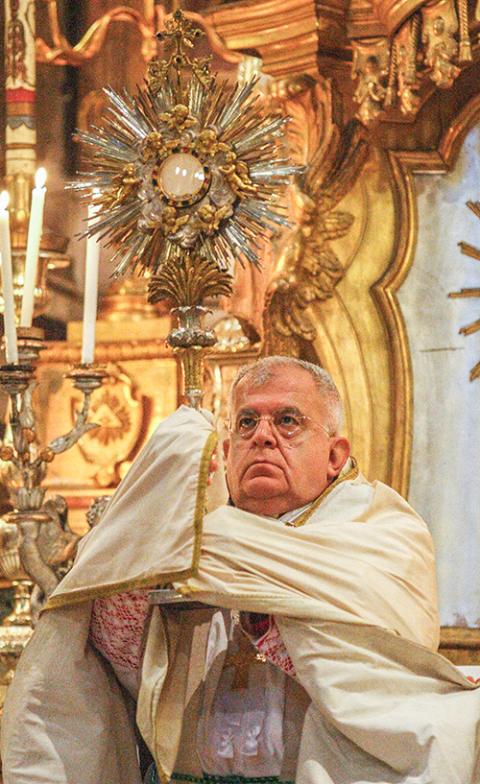
Archbishop J. Augustine Di Noia during a 2010 vespers and benediction service in Rome (CNS/Paul Haring)
His critique of and his concerns with post-conciliar theology are as well-balanced as they are well-argued. In the end, the hermeneutic priority, and current fecundity of theology, are, for Di Noia, found in the ressourcement approach.
Other chapters confront a range of issues, from his response to efforts to remove masculine conceptions of God, to the relationship of Catholic higher education and theology, to an examination of Christian humanism as it was taught in the magisterium of Pope St. John Paul II, to his theological and pastoral reflections on the sexual revolution.
The two chapters specifically on the Dominican charism, and an additional essay on Aquinas' treatment of Paul's Letter to the Romans, Chapter 5:12-21, will be especially poignant to those who are familiar with the Order of Preachers.
Throughout, Di Noia delivers keen insights and wonderful turns of phrase, often together. Thus, in the chapter on John Paul II, and specifically the challenge of postmodern thought, he writes: "Once you accept the Gospel, according to some, your freedom to be yourself is constrained and your ability to explore the many possibilities that life offers is frustrated. The measure of what it means to be human — human nature — is not a socially constructed convention but a divinely created gift."
This book is not for everyone. And it suffers from the difficulty all anthologies face, namely, it is sometimes repetitive. Still, the themes are so well-argued and so foundational for the practice of theology, this book should be widely read by those studying and doing theology.
For the general reader, if you do not mind occasionally finding yourself, as I did, aware that Di Noia's analysis is several steps above one's pay grade, this book is quite accessible.
Most of all, Di Noia communicates to the reader not just his thoughts about theology but his love for "the divine plan — dare we say the divine desire — to bring creaturely persons into the communion of trinitarian life."
His love for the church, admitting its many flaws, shines through precisely because of its role in the divine plan. "It follows from the fact that God intends this communion that he has a way of effecting it, since there is no merely wishful thinking on God's part."
One of the ways God affects the plan is through lucid, well-argued and faith-filled theologians like Di Noia. At the end of the book, you may or may not agree with all of his arguments, but you will find your faith strengthened and even renewed.

